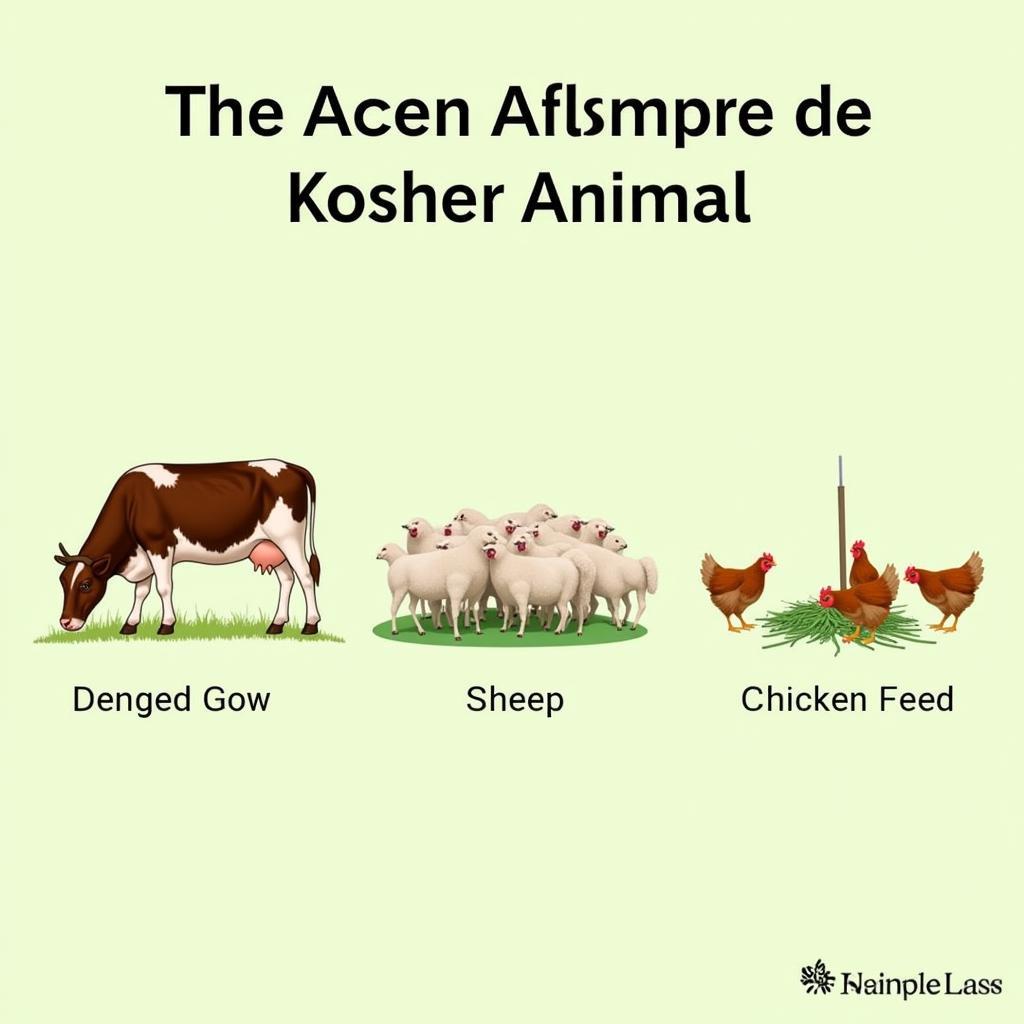Understanding Kosher Carne: A Guide to Its Significance and Preparation
November 19, 2024Kosher carne, often simply referred to as kosher meat, plays a central role in Jewish dietary laws and traditions. It signifies more than just a type of meat; it represents a connection to religious observance and cultural heritage. This guide will explore what defines kosher carne, how it’s prepared, and its significance within the Jewish community.
What Makes Carne Kosher?
Kosher dietary laws, known as kashrut, dictate which foods are considered kosher and how they must be prepared. For carne to be considered kosher, it must adhere to specific rules outlined in Jewish law. These regulations govern the types of animals permitted for consumption, the slaughtering process, and the subsequent preparation of the meat.
Permitted Animals
Only certain mammals and birds are considered kosher. Permitted mammals must have cloven hooves and chew their cud, such as cows, sheep, and goats. Birds of prey and scavengers are forbidden. Examples of kosher birds include chickens, turkeys, and ducks. Fish with fins and scales are also considered kosher.  Kosher Animals: Cows, Sheep, and Chickens
Kosher Animals: Cows, Sheep, and Chickens
Shechita: The Kosher Slaughtering Process
Shechita is the specific method of slaughter required for meat to be kosher. It involves a swift, painless cut across the animal’s throat by a trained and certified individual called a shochet. This process is designed to minimize the animal’s suffering and ensure a quick and humane death. After shechita, the animal is examined for any defects that might render it non-kosher.
Glatt Kosher Meat
The term “glatt kosher” often arises in discussions of kosher meat. “Glatt” refers to the lungs of the animal. If the lungs are found to be free of certain adhesions, the meat is considered glatt kosher, a stricter standard of kashrut observed by some within the Jewish community.
Preparing Kosher Carne: Key Considerations
After the shechita process, the meat must be prepared in a specific manner to remain kosher. This includes removing all traces of blood through salting and soaking. Furthermore, meat and dairy products cannot be mixed or cooked together according to kosher dietary laws. Separate utensils, dishes, and cookware must be used for meat and dairy.
Salting and Soaking
The process of removing blood involves thoroughly salting the meat and then soaking it in water. This meticulous procedure is crucial to maintaining the kosher status of the carne. It’s a practice deeply rooted in tradition and religious observance.
Separate Utensils and Cookware
Maintaining separate sets of utensils, dishes, and cookware for meat and dairy is paramount in a kosher kitchen. This prevents any cross-contamination and ensures that the integrity of kosher practices is upheld. Many kosher households have designated sets of dishes and cutlery marked specifically for meat or dairy.  Separate Utensils in a Kosher Kitchen
Separate Utensils in a Kosher Kitchen
The Significance of Kosher Carne in Jewish Culture
Kosher carne holds deep cultural and religious significance for the Jewish community. It represents a connection to Jewish heritage and a commitment to observing dietary laws that have been passed down through generations.
A Symbol of Faith and Tradition
Consuming kosher carne is seen as an act of religious observance and a way to connect with Jewish tradition. It’s a tangible expression of faith and a reminder of the covenant between God and the Jewish people.
Maintaining Community and Identity
Kosher dietary practices also play a vital role in maintaining a sense of community and shared identity among Jewish people. Observing kashrut fosters a sense of belonging and reinforces cultural ties.
Conclusion
Kosher carne, with its specific preparation methods and symbolic meaning, holds a significant place in Jewish tradition. From the carefully regulated slaughtering process to the meticulous preparation in the kitchen, every step involved in producing and consuming kosher meat is steeped in religious and cultural significance. Understanding the principles of kashrut provides valuable insight into the rich tapestry of Jewish life and the importance of maintaining these ancient traditions.
FAQ
-
What animals are considered kosher?
Cows, sheep, goats, chickens, turkeys, and ducks are common examples. Fish with fins and scales are also kosher. -
What is shechita?
Shechita is the kosher method of slaughtering animals, involving a quick, painless cut to the throat by a trained shochet. -
What does “glatt kosher” mean?
Glatt kosher refers to meat from animals with perfectly smooth lungs, adhering to a stricter standard of kashrut. -
Why is the blood removed from kosher meat?
Removing blood is a central tenet of kashrut, rooted in religious and symbolic reasons. -
Can kosher meat and dairy be mixed?
No, kosher dietary laws strictly prohibit mixing meat and dairy products. Separate utensils and cookware must be used. -
Where can I buy kosher carne?
Kosher carne can be purchased at kosher butcher shops, supermarkets with kosher sections, and online retailers. -
Are there different levels of kashrut observance?
Yes, individuals and communities may observe kashrut to varying degrees, with some adhering to stricter standards than others.
For further assistance, please contact us at Phone Number: 0963418788, Email: [email protected] or visit our address: 2M4H+PMH, Phường Nghĩa Thành, Gia Nghĩa, Đắk Nông, Việt Nam. We have a 24/7 customer service team.